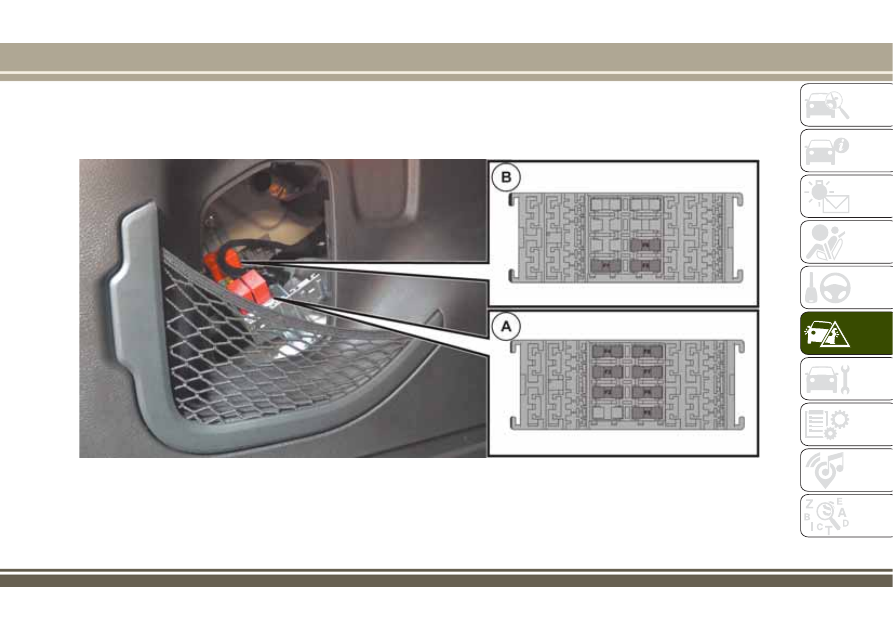Jeep Renegade (2018 year). Instruction - part 13

Depending on the car fittings, there could be control unit A and/or control unit B (see fig. 167).
A: fuse holder central unit no.1
B: fuse holder control unit no.2
167
J0A0324C
205
|
|
|

Depending on the car fittings, there could be control unit A and/or control unit B (see fig. 167). 167 J0A0324C 205 |